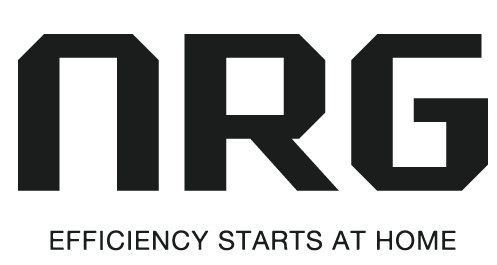The Role of Insulation in Soundproofing Your Home
Hey everyone, Mike here – one of the lead technicians at NRG Remodeling. I wanted to talk about a topic that doesn’t get enough attention when it comes to home insulation…using it not just for energy savings, but also soundproofing!
Having worked on hundreds of insulation installation and remodeling projects over my 15 years in the trades, I’ve seen firsthand how upgrading insulation can drastically reduce unwanted noise transmitting through walls, floors and ceilings.
In this post, I’ll overview exactly how various types of insulating materials block sound transmission based on the science behind it. And I’ll give my top tips for effectively soundproofing key areas of your home for less noise and more peace using proper insulation installation.
How Insulation Blocks Sound
Before we get into specifics, let’s do a quick primer on why insulation blocks noise from traveling inside your home in the first place.
Density
Most insulation materials, whether fiberglass batts or loose-fill cellulose, incorporate trapped pockets of air to resist heat flow for their core thermal function. This air cavity system also resists sound wave transmission.
The more dense and less porous the insulation material, the better it performs for reducing noise. Higher density fiberglass and dense pack cellulose insulations have an advantage over traditional batts in this regard.
Dampening
Insulation materials are optimized to dampen vibration caused by sound waves bouncing around inside them through friction and absorption rather than transmitting the waves through open air space quickly. This dampening effect varies based on the insulation and frequency of the sound waves.
Decoupling
In addition to dampening noise within the insulation itself, upgraded insulation also helps decouple walls, blocking flanking sound paths around outlets and stud cavities that would normally transmit voices, footsteps and other noise sources from room to room unchecked.
Key Areas for Soundproofing With Insulation
Now that we understand why insulation works to reduce noise, let’s examine the main zones in your home where you’ll get the most soundproofing value from professional insulation installation or enhancement…
Wall Insulation
Walls between bedrooms, home theaters and other living spaces should be packed with dense insulation to limit noise flanking from room to room.
Closed Cavity Walls
Most modern homes are built with double layer drywall and closed wall cavities. Blown-in dense pack cellulose does a fantastic job filling every crevice inside these closed spaces. Fiberglass insulation can also work if installed correctly at proper densities.
Our wall insulation process involves drilling small holes to pump in insulation evenly under pressure optimal for noise blocking density. This eliminates any missed spots or compression over time. We reinstall drywall patches flush and invisible once done.
Open Cavity Walls
In older homes with open wall framing, it’s best to utilize soundproofing insulation boards like mass loaded vinyl or isolation-wrapped batts to bridge the gaps between stud bays before closing up walls again. This decouples the drywall from joists that transmit noise.
If remodeling existing walls is not feasible, add an additional layer of drywall over existing walls with sound caulking, Green Glue noiseproofing sealant or isolation clips around the edges. Then pump in blown-in insulation per closed cavity instructions above.
Attic & Ceiling Insulation
One of the most common sources of home noise transmission is through ceilings to upper levels or attic spaces. Proper attic insulation keeps sound waves from flanking out roof vents or unfinished spaces then back through ceilings below.
For attic insulation, blown-in dense pack cellulose with an R-38 rating or higher lays across the open joists, rafters and other framing evenly to dampen noise. Batt insulation works too but gaps left from poor installation or compression over time will degrade acoustic performance.
If noise transmission is still noticeable through the ceiling drywall to rooms below, adding mass in the form of double or triple-layer drywall to the ceiling can further isolate sound when combined with dense ceiling insulation.
Floor & Crawl Space Insulation
Hard surface floors transmit a lot of noise, whether from upper levels through subfloors down to lower rooms or exterior noise into home spaces at foundation level. Treating floors is crucial for quiet interiors.
In multistory homes, isolate subflooring whenever possible at time of build. For existing homes, laying isolation material then plywood over subflooring before finished floors can aid in decoupling. Follow by blown-in dense back cellulose insulation pumped underneath, perpendicular to the floor joists.
For exterior noise entering through concrete foundation slabs, install basement wall / crawl space insulation using rigid foam boards, spray foam insulation or encased batt insulation to dampen the transmitted vibration through barriers.
Improving Interior Ambient Noise Levels
When analyzing clients’ goals for improving interior soundproofing during insulation upgrades and remodels, we reference dBA noise levels:
30-40 dBA – A quiet library
40-50 dBA – Typical suburban or rural background noise environment
50-60 dBA – Common standard for interior noise levels in dwellings
65-70 dBA – Normal conversation at 3-5 feet distance
As you can see, there is a range to target depending on if you desire minimal ambient noise (30-40 dBA) versus standard living noise ranging from equipment hums to conversations, children playing, etc around 50-60 dBA.
Upgrading insulation in key areas drops noise levels closer to that peaceful 30-40 dBA range. Complementary enhancements like new acoustical ceilings, floating subfloors and solid core interior doors combine to achieve holistic sound attenuation.
Pro tip: Adding a background noise producer like a ventilation fan or sound screen in bedrooms can help cover sporadic disruptions from other areas while maintaining low decibel ambience for restful sleep compared to straining to hear noises through walls all night long!
Sound Transmission Class (STC) Ratings
Another useful measurement construction professionals use to rate specific materials’ ability to resist airborne noise is the Sound Transmission Class (STC). This measures the decibel reduction value by frequency.
| Material | STC Rating |
|---|---|
| Drywall | 30-45 |
| Plywood | 25-35 |
| Fiber Insulation | 30-40 |
Higher STC = Better Noise Blocking
As shown above in the chart, common building materials like drywall, plywood and fiber insulations rate fairly low on the STC scale – allowing fair amounts of audible noise through under lab test conditions.
Specialized soundproofing materials like mass loaded vinyl, acoustical sealants and isolated wall systems achieve 50+ STC blocking a much wider frequency range of noise. But these specialty products can get expensive for entire room builds!
A cost-effective compromise is installing standard insulation at proper densities combined with other simple sound attenuation techniques covered earlier in this article.
Closing Thoughts
I hope this overview gives you a good sense of how we leverage insulation in old and new builds to effectively control both temperature and noise! Proper installation really optimizes insulation’s noise dampening capacity.
If you have any questions on cost-effective soundproofing solutions or want an assessment of how insulation improvements can build you a peaceful retreat from unwanted noise, don’t hesitate to call me directly at NRG Remodeling in Dallas & Fort Worth.
Our teams have installed noise reducing insulation and soundproofing enhancements in hundreds of North Texas homes – from master bedroom suites to home theater spaces, nurseries and more. We’ll develop an insulation acoustic upgrade plan tailored exactly to your needs, budget and noise sources whether interior or exterior.
Looking forward to hearing from you! And achieving new levels of blissful quiet in your living spaces soon.
All the best,
Mike
Lead Installer
NRG Remodeling













